#Naval Innovation
Explore tagged Tumblr posts
Text
youtube
#youtube#militarytraining#usmilitary#Veteran Ceremony#Government Event#November 7 2024#Military Recognition#Department of Defense#Leadership Ceremony#Navy Ceremony#Naval Innovation#Aerospace Engineering#Military Awards#Navy News#Department of Navy#Military History#Defense Technology#Military Event#leadership awards#veterans event#service awards#naval ceremony#government event#recognition ceremony#Department of the Navy#2024 DON#Navy event#2024 DON Sean J Stackley AEA Ceremony.
0 notes
Photo
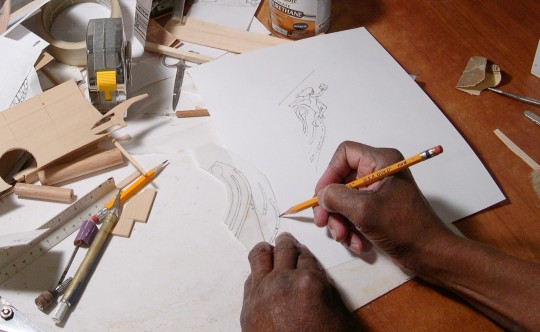
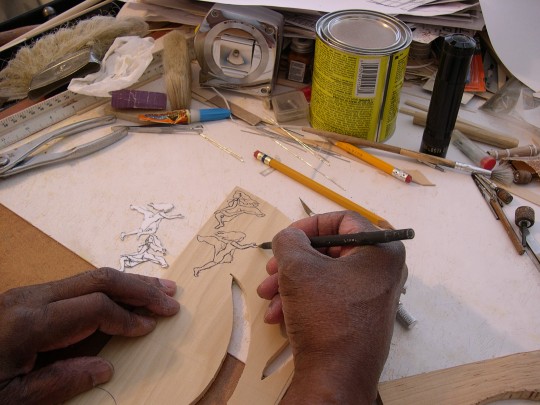

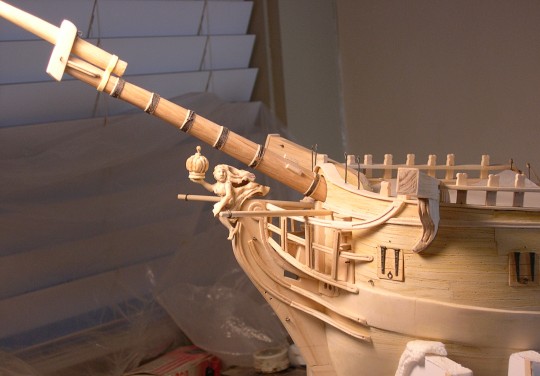
Research...research...and more research will give you the amazing answers to what you’re searching for. And yes, it takes patience (and sacrifice); but you will ‘arrive’! Here, after pouring over hundreds of figurehead images, I finally put together my version for the American privateer I’m undertaking.
What makes such work(s) sought-after is: originality, coupled with passion and focus. History also plays an important part to why I indulge in producing the concepts I do. After careful study, I was able to design this probable concept that graced the bow of this fighting ship -the American privateer of which 20,000 roamed the seas during the Revolution under The Letter Of Marque.
#age of sail#privateers#museum#naval ships#naval history#executive#the collector#collectibles#mariner#sailing#figurehead#news#nautical#maritime#artist#fineart#finest#woodworking#craftsman#innovation#engineering#research#scalemodel#model ship#oneofakind#scratch build#18th century
50 notes
·
View notes
Link
The article by Peter Suciu on "The Armory Life" discusses the USS Long Beach (CGN-9), America's first nuclear-powered cruiser, highlighting its significance in naval history and its challenges. The USS Long Beach, built by Bethlehem Steel and commissioned in 1961, was notable for being the first all-missile ship and having a nuclear power plant. It played significant roles in operations like Operation Sea Orbit and the Vietnam War. Despite its advanced design, its retirement and dismantling highlight the substantial costs and issues associated with nuclear-powered vessels. The article underscores the legacy of the USS Long Beach and its impact on subsequent naval strategies, ending the experiment with nuclear-powered surface combatants and reserving nuclear power for submarines and aircraft carriers in modern navies.
#USS Long Beach#nuclear cruiser#U.S. Navy#Cold War#missile systems#nuclear propulsion#guided-missile cruiser#Long Beach Naval Shipyard#operational history#technological innovations#naval warfare#radar systems#Talos missiles#Terrier missiles#Tartar missiles#combat operations#Mediterranean Sea#Vietnam War#Operation Sea Dragon#aircraft carrier support#decommissioning.
0 notes
Text
Docks Market: Tracing the Evolution and Uncovering Emerging Opportunities
The global docks market size is expected to reach USD 2.3 billion by 2030, as per a new report by Grand View Research Inc. The market is expected to expand at a CAGR of 3.4% from 2022 to 2030. The rising structure demand as the governing bodies of various economies is conducting redevelopment of waterfronts to maximize their value for both business and community, which is expected to propel market growth. Additionally, the constantly rising global population is indirectly leading to the scarcity of space in the existing urban ports leading to market demand for increasing the space productivity within a port.
One of the Norway-based engineering firms has developed smart application software to reduce the risk of accidents using an IoT platform. The newly developed technology makes use of hi-tech sensors to real-time monitor the operating states of floating docks from virtually anywhere. This newly developed application software shows the water levels across different tanks and other operating parameters for the docks which will increase the market for docks.
The Governmental permits are needed on the size of the dock, type of dock, and the type of natural resources that might get affected such as mangroves, corals, hard bottoms, and seagrass. The prohibitions are enforced on the harmful chemicals used for docks which may disturb the marine ecosystem. Lastly, some other restrictions might be added to control the type of dock being placed on the property.
The installation of docks is offered directly by the company-appointed contractors or distributors. However, the companies also offer a product suitable for DIY installations. In addition, the manufacturers also offer repair and maintenance services for the docks. The conventional port world is constantly changing, the technological, demographical, and sustainability drivers are affecting the daily business and are shaping several important trends which is also expected to drive the demand for docks market during the forecast period.
The global temperature rise is expected to make the transpolar passage and the Northern Sea Route could become potential alternatives for maritime freight. The use of the Northern Sea Route for maritime freight between Asia and Northern Europe is expected to reduce the voyage distance when compared with the Suez Canal route.
For More Details or Sample Copy please visit link @: Docks Market Report
Docks Market Report Highlights
The metal frame segment accounted for a market share of 52.0% in 2021, owing to the increasing demand for aluminum frame docks. Docks with aluminum frame are highly preferred by lakefront home or business owner as it offers strength as well as improve the aesthetic profile of the property where the dock is installed
The commercial application segment dominated the market in 2021 and is estimated to generate revenue of USD 1.1 billion by 2030, owing to the endless commercial applications for floating docks, however, they are commonly used at settings such as waterfront resorts and marinas
The market in North America is anticipated to witness a CAGR of 2.8% from 2022 to 2030 on account of increased users indulging in outdoor recreational activities that incorporate social distancing due to the pandemic. This will enhance the docks market within the region
The U.S. market is projected to witness strong growth over the forecast period and reach a market value of USD 0.68 billion in 2030 on account of the rise in the use of shipping for the movement of products and goods across regions. Additionally, space productivity is expected to lead to waterfront redevelopment activities thus positively influencing the docks market
The docks market is competitive in nature owing to the presence of several players that are primarily consolidated in the Asia Pacific and North America, whereas Europe exhibits a limited presence of established players. The changing lifestyle needs of the population, especially the younger section, towards activities such as adventure sports has also led to the rise in the use of boats and ships. This has also led to an increase in the use of floating docks across the globe
#Global Docks Market#Maritime Infrastructure#Port Development#Logistics Hub#International Trade#Shipping Industry#Dock Technology#Port Management#Water front Development#Maritime Connectivity#Harbor Innovation#Seaport Logistics#Dock Infrastructure#Naval Architecture#Coastal Development#Shipping Networks#Port Economics#Global Trade Routes
0 notes
Text
Despite Sparta’s reputation for superior fighting, Spartan armies were as likely to lose battles as to win them, especially against peer opponents such as other Greek city-states. Sparta defeated Athens in the Peloponnesian War—but only by accepting Persian money to do it, reopening the door to Persian influence in the Aegean, which Greek victories at Plataea and Salamis nearly a century early had closed. Famous Spartan victories at Plataea and Mantinea were matched by consequential defeats at Pylos, Arginusae, and ultimately Leuctra. That last defeat at Leuctra, delivered by Thebes a mere 33 years after Sparta’s triumph over Athens, broke the back of Spartan power permanently, reducing Sparta to the status of a second-class power from which it never recovered. Sparta was one of the largest Greek city-states in the classical period, yet it struggled to achieve meaningful political objectives; the result of Spartan arms abroad was mostly failure. Sparta was particularly poor at logistics; while Athens could maintain armies across the Eastern Mediterranean, Sparta repeatedly struggled to keep an army in the field even within Greece. Indeed, Sparta spent the entirety of the initial phase of the Peloponnesian War, the Archidamian War (431-421 B.C.), failing to solve the basic logistical problem of operating long term in Attica, less than 150 miles overland from Sparta and just a few days on foot from the nearest friendly major port and market, Corinth. The Spartans were at best tactically and strategically uncreative. Tactically, Sparta employed the phalanx, a close-order shield and spear formation. But while elements of the hoplite phalanx are often presented in popular culture as uniquely Spartan, the formation and its equipment were common among the Greeks from at least the early fifth century, if not earlier. And beyond the phalanx, the Spartans were not innovators, slow to experiment with new tactics, combined arms, and naval operations. Instead, Spartan leaders consistently tried to solve their military problems with pitched hoplite battles. Spartan efforts to compel friendship by hoplite battle were particularly unsuccessful, as with the failed Spartan efforts to compel Corinth to rejoin the Spartan-led Peloponnesian League by force during the Corinthian War. Sparta’s military mediocrity seems inexplicable given the city-state’s popular reputation as a highly militarized society, but modern scholarship has shown that this, too, is mostly a mirage. The agoge, Sparta’s rearing system for citizen boys, frequently represented in popular culture as akin to an intense military bootcamp, in fact included no arms training or military drills and was primarily designed to instill obedience and conformity rather than skill at arms or tactics. In order to instill that obedience, the older boys were encouraged to police the younger boys with violence, with the result that even in adulthood Spartan citizens were liable to settle disputes with their fists, a tendency that predictably made them poor diplomats. But while Sparta’s military performance was merely mediocre, no better or worse than its Greek neighbors, Spartan politics makes it an exceptionally bad example for citizens or soldiers in a modern free society. Modern scholars continue to debate the degree to which ancient Sparta exercised a unique tyranny of the state over the lives of individual Spartan citizens. However, the Spartan citizenry represented only a tiny minority of people in Sparta, likely never more than 15 percent, including women of citizen status (who could not vote or hold office). Instead, the vast majority of people in Sparta, between 65 and 85 percent, were enslaved helots. (The remainder of the population was confined to Sparta’s bewildering array of noncitizen underclasses.) The figure is staggering, far higher than any other ancient Mediterranean state or, for instance, the antebellum American South, rightly termed a slave society with a third of its people enslaved.
5K notes
·
View notes
Text

Nobody expects the Spanish Inqui.... Armada in door no. 6. Here we have a rare example that once made it to London. The Galeon Andalucia

More about her here:
The ‘Galeon Andalucia’ is a faithful replica of a galleon. This mostly three-masted type of ship was developed by the Spanish in the 16th century and was during the 17th century adopted and further developed by almost all European naval nations. Galleons were the epitome of a fast, highly manoeuvrable warship with great seaworthiness. This made them ideal for expeditions to explore new trade routes between Europe and South-East Asia or America. Thanks to its absolutely superior military characteristics, the galleon quickly became the dominant warship of its time.
As there were no usable construction drawings for the replica of such a ship, the ‘Galeon Andalucia’ construction project also included the collection of all the information, dimensions and other important details required for the construction. Safety and innovation also played a major role in the construction of the ship. The entire hull and decks were made of fibreglass layers and then clad in wood. The construction phase lasted 17 months and employed more than 150 workers.
182 notes
·
View notes
Text

The F-14 Tomcat

The F-14 Tomcat, an iconic American supersonic fighter jet, gained fame for its swing-wing design and role as a carrier-based interceptor. Developed by Grumman for the US Navy, it entered service in 1974 and was retired in 2006.

The F-14 Tomcat garnered notable performance records during its illustrious service. In 1974, an F-14A set a world speed record, reaching 1,606.342 miles per hour (2,585.086 kilometers per hour) over a 500-kilometer closed-circuit course. Its remarkable speed capabilities were underscored by its ability to exceed Mach 2.

In combat, the F-14 demonstrated exceptional effectiveness, participating in pivotal military operations such as the Gulf War and Operation Enduring Freedom. Its swing-wing design and Pratt & Whitney TF30 turbofan engines endowed it with agility and versatility, enabling precise maneuvering and long-range engagements.

Armed with radar-guided missiles and a powerful radar system, it was designed for air superiority and fleet defense. The Tomcat played a crucial role in various conflicts, including the Gulf War. Its advanced avionics and long-range capabilities made it a formidable adversary.
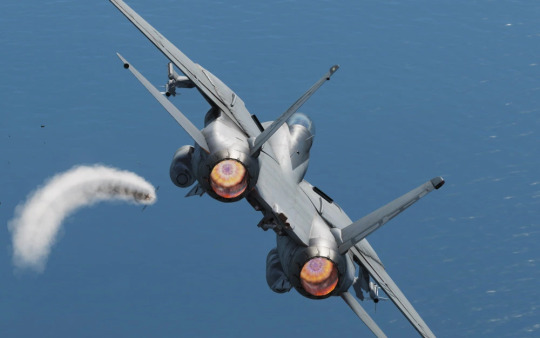
The F-14's advanced radar systems, including the Hughes AN/AWG-9 and later the AN/APG-71, facilitated multi-target tracking and engagement, particularly with the AIM-54 Phoenix missile system.
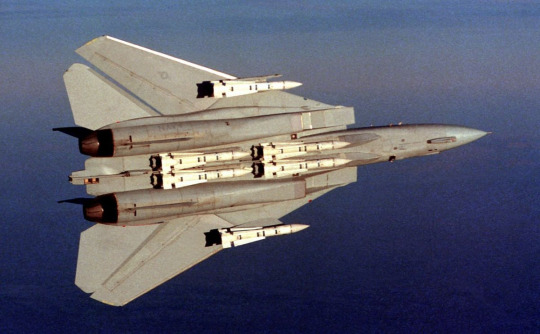
Beyond its performance in flight, the F-14 left an indelible mark on popular culture, immortalized in the film "Top Gun." Its enduring legacy as a symbol of American military power and aviation excellence continues to captivate enthusiasts and historians alike.

Though retired, its legacy endures as a symbol of naval aviation prowess and technological innovation.

146 notes
·
View notes
Text
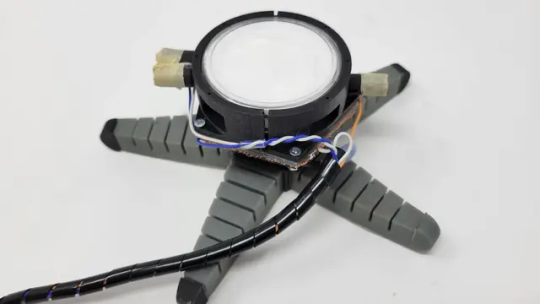
Greetings folks! Did somebody say fungus bots? its time to spore some trouble i guess :) ok it wasnt funny i get it.. Anyways meet with new fungus based biohybrid bot..
youtube
before i start to explain how its works lets take a look at its backstory shall we?
The idea was almost age old actually, experimentation of soft body robotics and bio robotics and today its reshape as we see biohybrid robotics with the search for more sustainable, self-healing, and biodegradable materials. Traditional robots are often made from synthetic materials and metals, which can be rigid, non-biodegradable, and challenging to repair. The researchers at Cornell University sought to overcome these limitations by integrating biological elements into robotic systems.
The team turned to mycelium, the root-like structure of fungi, which has the unique ability to grow, self-repair, and biodegrade. Mycelium is also known for its strength and flexibility, making it an ideal candidate for use in soft robotics. By embedding mycelium within a network of sensors and actuators, the researchers created a biohybrid bot capable of sensing its environment and responding to stimuli, all while being environmentally friendly.
This fungus bot represents a significant step towards more sustainable robotics, demonstrating how living organisms can be harnessed to create innovative and eco-friendly technologies. The research also opens up possibilities for robots that can grow, adapt, and repair themselves in ways that conventional robots cannot, potentially revolutionizing fields such as environmental monitoring, agriculture, and even healthcare.

there is four actual elements that actually runs this bot besides of shell.
Fungus's Mycelium
Fungus's slug
UV light or UV array in the sun light
Electricity (it seperates as fungus related electrical pulse and electricity waves from censors)
firstly lets start with fungus mycelium: Mycelia are the underground vegetative part of mushrooms, and they have a number of advantages. They can grow in harsh conditions. They also have the ability to sense chemical and biological signals and respond to multiple inputs. so basically its neural system that transfers certain commands of activities between root and fungus itself
its slug is basically fungus's cell system or actual biohybrid organism it this case
once mycelium gets affected by UV lights it generates small electricity pulses to slug system and when slugs gets electrocuted by these pulses it acts like a muscle basically and it causes the slug to move or contract its muscles to activate.
and once you figure out how you gonna shape its muscle system and house them carefully you will have a "biohybrid robot" as their terms
the reason im taking this now is it reminded me "Fungus Baby Experiments" which is an inside name for series of projects that been continued for a while after corona until now.. Simply, the goal was to create or adapt an organism to thrive in different environments and make sure these environments livable by humans in the future by manipulating with artificial and external factors. Google it :)
anyways.. thats all from me this time..
until next time..
Sources:
for fungus baby experiments:
#tech#tech news#daily news#cyberpunk#future tech#scifi tech#research#rnd#r&d#labs#neuroscience#neurotech#fungus#fungus experiments#biohybrid bot#synthetic bot#synthetic robot#Youtube
39 notes
·
View notes
Note
i’d never even considered how the civil war would affect alfred during ww1, that’s a really interesting idea. would you mind expanding a bit more if you haven’t already?
fuck yes I can expand on that. TW for historic nastiness.
Okay to prelude— I don't typically do 1:1 state/gov to character but considering the cession of the south into a separate state and the US itself is the Union, my boy is in blue. In this blog's universe there is no schizophrenia or split personality or Doppelgänger or any other representation of the south. It gutted him and he lost feeling in a lot of his usual area and it severely weakened him but he represented the United States and that means union blue. And considering the north really doesn't have all that much moral leverage on the south especially in matters of racism, it's not much of a jump. If you aren't crazy about that, look away now.
So. Trench warfare. It's as old as humans bashing each other's heads in. Defensive ditches are an archaeological feature across the applicable world. But it's the American Civil War that might hold the gold medal for largest gap between how technology designed to kill had advanced spectacularly over any innovation that might save lives. I won't say deadliest because you do have the Taiping Rebellion around the same time but a lot of that was sièges and counter sieges and river based naval engagements. But anyway— rifled artillery and direct fire techniques had changed the game and soldiers were driven underground behind parapets and sandbags. Around Petersburg especially. And it's towards the end of the war when the Confederacy is increasingly desperate and hand to hand fighting is getting more common and more brutal. Entire regiments were lost in hand to hand mêlée. And if a soldier didn't die instantly, it was off to a field hospital. Guts ripped open by iron shells, lungs hanging from the tips of bayonets, wounds so infected they glowed, limbs hacked off by a surgeon who hadn't washed his hands in six days and sepsis rot so foul someone can taste it on the air even with the mouth closed. Malaria and typhoid so fucking bad the army cots would literally shake apart from how bad men shivered when the chills aspect of the fever cycle hit. I know it's fashionable right now especially on vintage fashion YouTube to say people in history weren't disgusting but like, I've been in archives for years. Yeah it fucken was. Never was medicine so far behind the ability to kill.
So Alfred's probably died a solid dozen times half of which from shitting himself because he's probably riddled with parasites. He's been shot, stabbed, slashed. Shaken, rattled and absolutely steam rolled. And the final part of his almighty trauma is this is happening just up the river from where he was born in Jamestown. Alfred is on his belly in the earth beneath the feet of the people that bore him and then rejected him, begging his Protestant God and any of his own people listening and the very earth itself to protect him, to keep him alive as shell after shell lands around him.
When every battle is over, the dead rot in piles across the fields and trenches. The famous photos of the Antietam and Gettysburg dead are days old, you can see some of the bodies had been looted. There were so many dead and so many dying that upon its tardy entrance into world war one, the US had a more coherent body management and disposal program than any other of the entente powers. Who had already been at war for nearly four years.
So yeah, in my opinion he got ten steps into a front line trench where the British and especially the French were just causally walking on bodies, he vomited so hard New York felt California rattling around in there and said fuck it. My boy was either off to cleaner pastures like Belleau Wood or the air corps. It was too much too soon and he just couldn't keep it together in those conditions. They knew what bacteria were by WW1 and he was a burgeoning world power. So he probably only went full himbo with dysentery twice in France so it wasn't as bad as his civil war flop era but oof. That smell, the screams, pressing himself into soil that is not his own yet again is too recent and too vulnerable. He can't do it again so soon.
#the ask box || probis pateo#hws America#meatsack mechanics || the sociology and biology of nations#I'm back#broke my tablet lol
120 notes
·
View notes
Text
D-Day: Operation Overlord
On June 6, 1944, over 160,000 Allied troops, including Americans, British, and Canadians, embarked on a courageous mission known as Operation Overlord. The D-Day invasion, as it would be famously known, marked the beginning of the end of World War II.


The largest seaborne invasion in history, D-Day saw troops land on five Normandy beaches, codenamed Utah, Omaha, Gold, Juno, and Sword. The assault started with airborne operations, and naval forces bombarded the coastal defenses before the landing of ground troops.
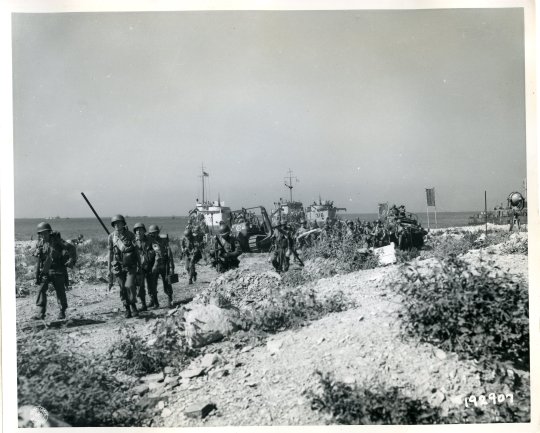

The D-Day invasion was a logistical feat. From deception tactics, such as Operation Fortitude, which misdirected German attention from Normandy, to the innovation of the Higgins boats, it showcased ingenuity as well.
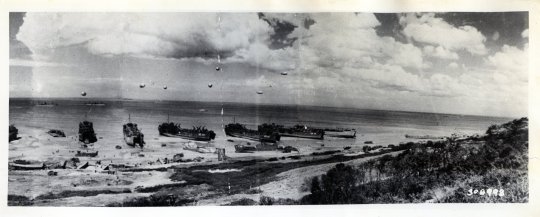
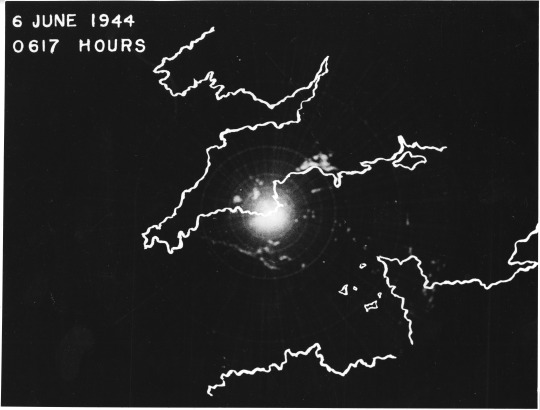
The cost was steep; the Allies suffered heavy casualties. Yet their bravery and sacrifice led to the successful establishment of a Western front in Europe, a crucial step towards liberating the continent from the Nazi German regime.

As we look back on this historic day, we remember the extraordinary courage and dedication of all those who fought for freedom on the shores of Normandy.
#national archives#history#archives#wwii#normandy#dday#operation overlord#world war 2#military#military history
161 notes
·
View notes
Text

WINGED VICTORY OF SAMOTHRACE (NIKE OF SAMOTHRACE) b. 200-175 BCE
This is a masterpiece of GREEK sculpture from the HELLENISTIC era. It is a colossal statue representing the goddess NIKE (VICTORY), composed of a white marble statue and a grey marble ship's bow base
The sculpture depicts NIKE alighting on the ship's bow, with her wings dramatically outstretched behind her and her drapery billowing in the wind. This dynamic composition conveys a vivid sense of movement and energy, as if the goddess has just descended from the heavens to announce a naval victory.
The sculptor's technical mastery is evident in the construction of NIKE'S wings, which were carved from marble and inserted into slots on her back. This innovative approach allowed the creation of large, unsupported wings without the need for external support, a rare feat in ancient GREEK sculpture.
Stylistically, the NIKE of SAMOTHRACE exemplifies the HELLENISTIC aesthetic, with its dramatic, emotive pose and the eroticized rendering of NIKE'S body beneath the sheer drapery. The statue was intended to be viewed from multiple angles, encouraging the viewer to physically engage with the artwork
Regardless of the specific historical context, THE WINGED VICTORY OF SAMOTHRACE stands as a masterpiece of HELLENISTIC sculpture, celebrated for its technical virtuosity, dynamic composition, and emotive power.
#the winged victory of samothrace#hellenistic#hellenism#hellenic deities#Hellenistic sculptures#greek mythology#greek tumblr#greek gods#greek posts
39 notes
·
View notes
Text
youtube
#militarytraining#youtube#Black Sea Defense#Defense Networking.#BSDA 2024#Aerospace Exhibition#Defense Expo#Highlights#Defense Conference#Defense Innovation#Aerospace#Black Sea Region#Defense Solutions#Defense Industry#Security Technology#Military Technology#Naval Defense#Final Day#Military Equipment#Maritime Security#Air Force Technology#Military Showcase#BSDA Show#VLOG#Defense Exhibition#Defense News.#Defense Showcase#Naval Vessels#Navy Technology#Day 4
0 notes
Photo






The American Privateer...Continued
I’m delighted to discover this recent audience to the subject matter featured...I raise my glass! However, I know some are curious about how I get the fine details to this work -and the truth is simple. Just search, because there’s a ton of information out there. However, that information must be exacting to the period. Everyone one of us have a unique way for how we do things. I usually get my answers by asking myself why certain things aren’t featured when I know they existed from research.
After I pour over documents and discover visual references, it’s like a child’s playground of ‘goodies’! But we also know that too much of a good thing can be toxic over time; so we learn to calm our excitement and use what we find in moderation, re: a little here, a little there. This is how I get the goodness of my assignments to be what others seem or deem impossible. The truth is we ALL have gifts to share, which is why I’m taking the viewer on this small trip into my life as an artist-craftsman.
This privateer model is as accurate as one can get it to the real thing. This is how this particular ship was designed for battle. And, this is how it served our American sailors/officers when we revolted to be a separate Nation from British rule. The final views of the build will support these words. In the meantime, enjoy the images that I’m bringing to you. Thanks for viewing!
#age of sail#privateer#museum#curator#privateers#naval history#executives#the collector#collectibles#mariner#news#nautical#maritime#artists on tumblr#fineart#finest#craftsman#woodworking#engineering#innovation#researcher#scalemodel#navy#model ship#scratchbuilt#fine detail
10 notes
·
View notes
Link
The article, written by Peter Suciu, discusses the USS Long Beach, America's first nuclear-powered cruiser, detailing its history, technological advancements, and operational service from its construction in the late 1950s through its decommissioning in the 1990s. The USS Long Beach, built by the Bethlehem Steel Company, was notable for its nuclear propulsion, which provided it with unlimited range and led to its inclusion in significant naval missions like Operation Sea Orbit and the Vietnam War. Despite its groundbreaking design and capabilities, the article highlights the challenges and costs associated with the decommissioning and disposal of nuclear-powered naval vessels, drawing a parallel to the ongoing efforts to recycle the ex-USS Enterprise (CVN-65). The USS Long Beach's legacy includes influencing the continued use of nuclear power for U.S. Navy aircraft carriers and submarines.
#USS Long Beach#nuclear cruiser#U.S. Navy#guided missile cruiser#nuclear-powered warship#CGN-9#Cold War#technological innovation#naval warfare#USS Enterprise#missile systems#radar technology#anti-aircraft capabilities#anti-submarine warfare#reactor technology#sea power#naval history#military engineering#national security#ship design#operational history#deck operations#high seas patrols#maritime strategy#decommissioning.
0 notes
Text
Adam Kinzinger at Substack:
By tradition, the Fourth of July is celebrated with fireworks, parades, and flags. More recently, it has also become associated with a mash-up of fantasy, fascism, and resentment that Donald Trump and his followers mistakenly equate with patriotism. As they wave their Trump flags and dream of him persecuting their political opponents, they reveal a deep misunderstanding of the Declaration of Independence, which we celebrate, and the Founders who signed it. In the cartoonish version embraced by angry Trumpists, the Declaration was merely a jab at King George III, who ruled tyrannically. The King's offenses included occupying the colonies with his armies, impressing colonial sailors into naval service, and "ravaging" the seas and countryside. However, these grievances were not the Founders' primary concern. Out of the 27 grievances listed in the Declaration, 15 were about the colonies being denied self-governance. In essence, the men who declared our independence sought to replace one-man rule with a nation governed by law.
Were they alive today, the signers would be shocked by Donald Trump’s ambition to become our first authoritarian ruler. They would be alarmed by the recent Supreme Court decision to expand the president’s immunity from the law and dismayed by the ignorance of Trump supporters regarding the Declaration’s contents, the men who signed it, and the historical context in which it was written. Did you know, for example, that the Declaration criticized the King for restricting immigration to the colonies and the naturalization of foreigners? It also protested the military's existence above civilian control and the monarch's refusal to be governed by the law. The drive for more immigration, the demand that no one be above the law, and civilian control over the military were expansive and innovative ideas that are anathema to the Trump movement and to Trump himself. He seeks to place himself above the law, use the military against civilians, and enforce draconian measures against immigration. In his 2020 Fourth of July speech, Trump ignored the generosity and civilized qualities of the signatories, instead viewing their lives through the lens of “unbridled ambition” rather than their commitment to decency and humble public service.
[...] The Founders did not declare independence out of personal ambition, nor did they seek to replace one king with another. Instead, they dreamed of a nation of moral, respectful, and caring citizens. On this Fourth of July, let’s honor their vision with the respect it deserves. As we wave the flag, watch the parades, and enjoy the fireworks, let’s recommit ourselves to the pursuits they began. If we don’t stand up for the true meaning of Independence Day, who will?
Adam Kinzinger gets it 100% on the real meaning of Independence Day that the Trumpists don’t get.
16 notes
·
View notes
Text
On the 29th of October, eleven years ago, Assassin's Creed IV: Black Flag was released for the XBOX 360 and PS3.

Assassin's Creed IV: Black Flag is set in the Golden Age of Piracy, where players take on the role of Edward Kenway, a charismatic pirate-turned-assassin. The game combines naval exploration with open-world adventure, allowing players to sail the Caribbean, engage in ship battles, hunt treasure, and explore lush tropical islands. Known for its seamless blend of land and sea gameplay, Black Flag offers a rich, immersive world filled with historical intrigue, vibrant environments, and a thrilling pirate narrative. It's celebrated for its freedom, storytelling, and innovation within the Assassin's Creed series.
8 notes
·
View notes